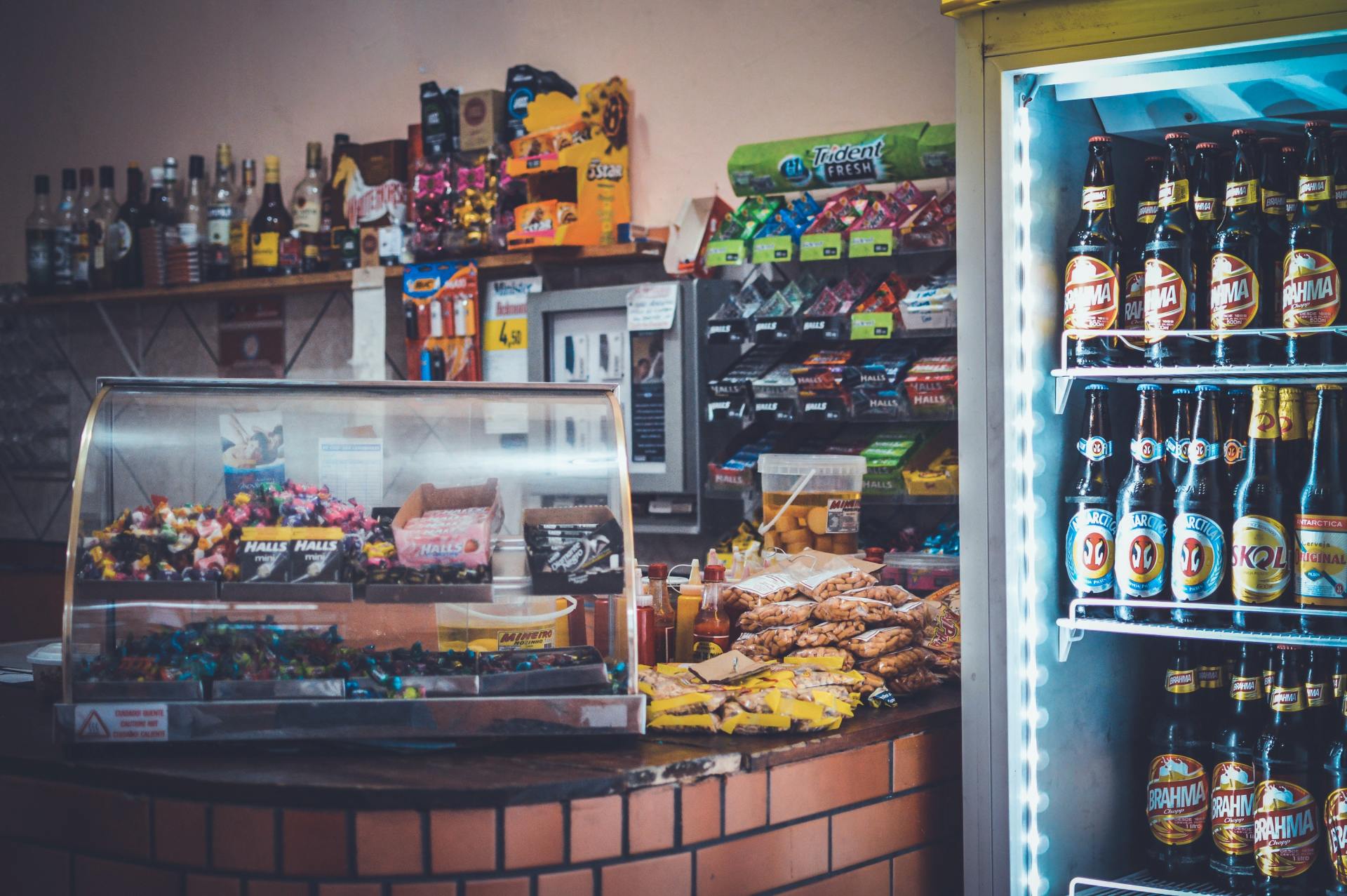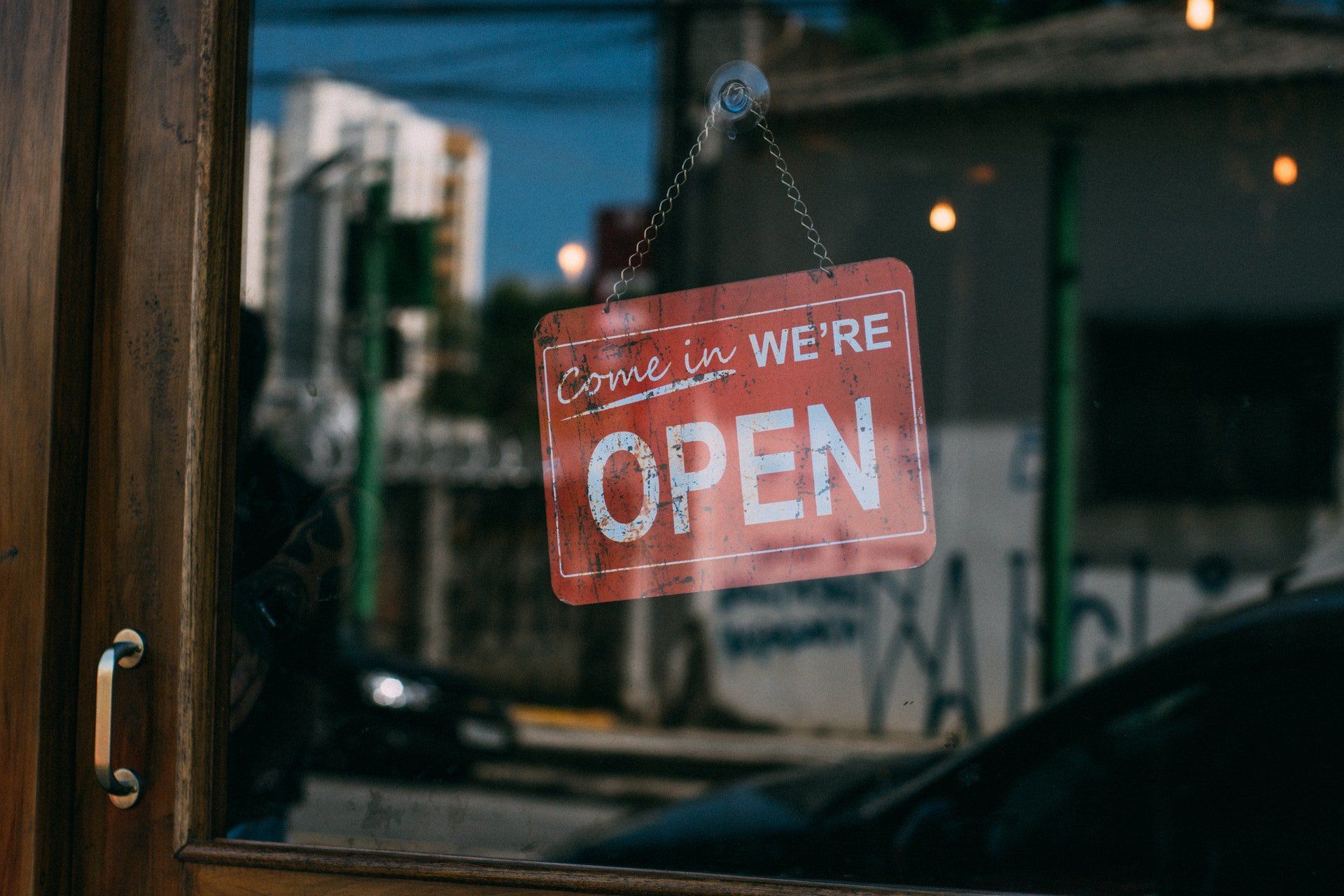4 Questions to Ask When Managing Your Retail Store
Daysen Christensen • April 14, 2020
4 Questions to Ask When Managing Your Retail Store

When a new retail space is being designed, it’s essential to have a focus on placement of products and shelving. The shelving really makes or breaks the overall customers’ shopping experience by enhancing the overall layout or creating a feeling of disorganization.
With so many different types of retail, there’s no “one size fits all” solution to retail management. No matter whether you’re running a supermarket or a specialty store, approaching your store’s specific needs with an understanding of your situation, is very crucial in the business’ success.
Here are some questions you should be asking yourself and seeking out the answer to when deciding how you want to categorize and place your products…
1. How much space do I have?
Obviously, the size of your store has a big impact on the amount of product and categories you will have, as well as what kind of shelving you will use and how it will be placed. It’s important to showcase your merchandise without overwhelming you space. Generally, the categories you’ve chosen to take up the most space will be the main attraction to prospective customers. Understanding this will help you know your customers better.
2. What type of products do I stock?
The products you stock in your store should have a direct impact on your retail shelving. You might consider the display material being used when choosing the right shelves, as well as the size and weight of the products. For example, a wood shelf may not be the best idea for sharp, rough, or heavy products. Finding the right match of shelving to your products is just as important as finding the right space.
3. How heavy are my products?
Weight is a huge factor when considering shelving for your retail store. The shelves need to have the correct weight capacity for safety reasons. You also want to ensure that the shelving material is capable of withstanding the collective weight of the products. Overall, you want to have a safe store while keeping it attractive to customers.
4. Will I need more shelving down the road?
It’s always important to consider the future of your store by creating a plan with realistic goals. Some of this future planning may be unpredictable as trends are always changing and products you may sell in the future may not even exist right now. This could mean a need to change some shelving or add shelving to accommodate for these products.
All-in-all, as a retail store owner, your goal should be to expand. Thus, it’s important that the shelving and others aspects of the store are compatible with any expansion you may make in the future. If you can quickly make changes to your store with ease, this will be beneficial to you later on when things are likely to change.
Conclusion
If you’re looking for a smart and easy way to manage your products and categories, you need to check out Retail Shelf Planner. The cost of this software is a fraction of any other with the same capabilities and it is sure to save you time and money, so you can focus on the important stuff. Try their free demo today!

Maximized profits comes from 2 specific areas: increased sales and decreased costs. This may seem simple, but getting this to work can prove to be difficult. While competition continues to grow, so does the cost to run your retail store. Rising above all this is possible if you know what steps to take. Here are 4 ways you can improve your retail operations: 1. Determine KPI’s (Key Performance Indicators) You can’t really know if you’re improving if you don’t know where you began. KPI’s are metrics for assessing your progress in reaching your goals. To get a better understanding of your retail operations, begin with analyzing the following: -Total Sales -Sales by location -Best and worst selling products -Conversion rate -Inventory turnover rate -Costs of goods sold Once you’ve focused on the KPI’s in these areas, you’ll be able to set purposeful goals. 2. Automate! Don’t waste your time on the tedious tasks. It’s unnecessary, and more importantly, keeping you from what you really need to be spending your energy on. Find the right automation system is your best bet on reaching your goals, especially when expanding as a business. With these minor, time-consuming tasks automated, you’ll be way more efficient with the rest of your job. 3. Optimize Inventory Management Use your data to figure out which items are selling the most so you can always ensure they are in stock. Knowing what products aren’t being sold is key information to have as well. Focusing on the products your customers are buying most will help you dedicate the shelf space to the more important merchandise. 4. Evaluate Your Customers’ Experience Harvard Business Review has stated, “It’s anywhere from 5 to 25 times mire expensive to acquire a new customer than it is to retain an existing one.” Thus, it would prove most profitable to focus your efforts on customer retention by ensuring your customers get the type of shopping experience they expect. One way to make this happen is with a loyalty program. This gives your customers more reason to keep coming back as it is more value for them in the end as well. Even something like free wi-fi or food samples can make the difference in someone coming back again or going to a more convenient location next time. Staff are the major players in keeping customers happy, be sure to train them so their focus in customer retention is the same as yours. Analyzing where you sit in these 4 areas and focusing on how you can better perform will reveal the changes you need to make to achieve your retail operations goals. It’s time you rise above all the competition and get your business on track for success! -Northern Trade Works

Whether you want to improve the effectiveness of store layout, management of inventory, or the supply chain, you understand that having retail operations in order is essential for your store’s success. Keeping customers happy is your number one focus, but that means getting the behind the scenes work right. If the warehouse doesn’t operate efficiently, you’ll fall behind. If your store isn’t inviting and exciting, you’ll lose traffic. If your online sales aren’t barrier-free, your website will lack in profits. You get the idea! Having every aspect of your retail business running like a well-oiled machine is key to seeing the success you want. But how is that done? It’s important not to allow yourself to become overwhelmed, thus, we are focusing on 3 key aspects of retail operations optimization. 1. Inventory Management 2. Store Effectiveness 3. Omni-channel Efficiency Let’s dive in…. Inventory Management Step 1: Optimize the layout of your warehouse Ensuring that the logistics and fulfillment team are working efficiently is important, however, if your warehouse layout is lacking in efficiency itself, your workers will be limited. Place your best-selling items close to the packing station. If items are frequently sold together, put them together in the warehouse. It’s simple tweaks like these that will get your inventory area moving like clockwork. Step 2: Conduct regular stock check Errors and issues are bound to pop up constantly in this industry, especially if you’re not staying on top of the inventory. Knowing what’s missing, what’s low, and what’s damaged will help you be aware of errors ang get them sorted fast. Step 3: Perfect the order rate Striving for perfect order rates, though not always possible, is good for constantly finding ways to improve your system. Reporting reasons for customer returns and reasons for slow shipments will help you analyze the data effectively. Store Effectiveness Step 1: Get into cross-merchandising Let the data from your business systems advise you on what are your best-selling items, versus what is no selling well. Review how you are merchandising these products. Ask yourself, “could these products benefit from cross-merchandising?”. Step 2: Report on in-store sales Use your reporting tools to figure out what promotions are driving the most traffic to your stores. Consider running these promotions longer, or use it again in the future. This is beneficial for profits and for building your brand. Step 3: Improve store layout Keeping a clean store filled with only happy employees is very important. There’s a science for successful sales on top of that. Watch the behaviour of customers and help guide them on a journey. Rearranging the store’s layout to slow customers down and keeping them engaged with the products is a great way to see sales rise. Omni-channel Efficiency Step 1: Be sure to have correct stock levels across sales channels All of your sales channels need to be reporting on stock from the same inventory management system . This helps prevent stock outs and overselling issues. With all the moving parts of your business, something as simple as this will help reduce pressure on staff, keeping customers happy. Step 2: Review profit margins by sales channel Remembering to report your profit margins by channels, and not just overall profit, will allow you to keep selling on successful channels and move away from the less effective ones. Step 3: Automate your omni-channel workflow You need to be able to focus on growth. Finding a way to automate your workflows will help you steer away from putting energy into the miniscule tasks. Finding a clear way to grow while doing the aspects of the business you love is so crucial to real success. For more ways to optimize your stores success, check out our other blogs or contact Northern Trade Works . Using the right software for your business is key to success and we can help you with that.

In somewhat difficult times, it’s important for retailers to be innovative as to attract and retain quality customers. Thus, optimising your product groups’ shop-ability and financial performance are essential. That’s where category management comes in… There are many ways that category management can tackle and advance your customers’ shopping experiences. Some of these include competitive pricing, attractive promotions, applicable collections, and visually appealing merchandise. All of these will lead to better customer value propositions. However, with all the moving parts, it can be difficult to stay on top of the constant changes in trends. Finding a mix of simple, yet effective management is key to maximizing your store’s space. Here are a few ways you can use category management to optimise success: Omni-channel Environment The retail industry is constantly changing. Over the past few years it has evolved into 3 distinct elements: click, brick, and mobile (i.e. online, in-store, phones). As the move to online platforms continues to grow exponentially, it’s essential to make the in-store experiences impeccable. That’s where focusing on category management is important. With use of planograms and other tools, you can enhance the store format to increase the appeal of product display. Consumer Personalisation With the digital age, shoppers expect more and more for their shopping experience to be personalized. This means that we need to implement this in the physical shopping experiences more than ever! Assortment managing is where you will focus on this aspect of your store’s organization. With relevant data insight, category management can help you control assortment decisions the most optimal way. This will ensure product categories are targeted at the right individuals according to their tastes and style. Online Influence Social media has impacted the retail world in massive ways. Though consumers do still enjoy shopping in a physical store, a lot of their own research on pricing, reviews, and where to shop is all conducted online. Category management can focus in on this critical stage of buying. Well-designed personalized promotions and social media presence from you, as a retailer, can lead to positive in-store buying decisions from your customers. Overall, category management works best when built upon correct information and good communication. As you can tell, it’s highly important to get your category management right, especially with the online competition. For a simpler, cheaper, yet more effective way to use effective tools like planograms, check out the Retail Shelf Planner or contact Northern Trade Works .

Being a great retailer is no easy feat. There are many moving parts to a successful retail business . All of these parts working together in sync is what creates your quality reputation. Thus, leading to loyal customers, which leads to increased profits. One of the most important aspects of all of this is your customer service. This aspect of the industry alone can be a very difficult element to control, as a large part of it lies on your sales associates. It’s been said that “consumers once burned are never to return”. It is essential to train your employees with that idea in mind. I would like to highlight some specific things that a retail owner and employee should always do to ensure an unmanageable chain of events does not occur. 10 Things You Should Always Do in Retail: 1. Warmly greet all customers that enter your store. First impressions are essential for setting the rest of the shopping experience for the customer. 2. Avoid voicing negative thoughts about the activity of the store. Nobody needs to hear that the store is “slow”, what they need to hear is that there is someone there to help them if needed. 3. Never reply to a customer by saying “No” (unless it’s followed by “but we do have…”). Even if you don’t know an answer to a customer’s question, it’s important to find that answer for them. 4. Don’t say “Is there anything else?”. Be specific to their needs and suggest an item that might go with their purchase. 5. Never take a return without asking what went wrong. There is always something that went wrong and more often than not that problem can be solved instead of a full refund. 6. Do not eat or drink in sight of customers. This give an unprofessional feel and discourages respect in the store. 7. Don’t hide information from customers. If there are additional charges, or something cannot be returned for full refund, tell them straight up. 8. Don’t blame! (The boss, the co-workers, the product…) Just make the problem right. 9. Never dismiss a customer if you don’t sell an item. It’s important to go the extra mile and suggest where they may find what they’re looking for. 10. Never stop giving exceptional service . Even if the order is rung up, it’s important to leave a lasting impression with your customers. As you can tell, customer service can be a key part of your retail business’ success! We suggest giving this a major focus in your planning. To help you follow through with that, having a correct program set up to help you plan, run and record the rest of the retail work is extremely important. This is what makes the successful retailers stand out. An amazing program to use for retailers is Retail Shelf Planner . No other program is available that offers such incredible features for so little. Feel free to apply for a free demo here ! -Northern Trade Works

Category management is an essential technique for success in the retail industry. Used to direct clusters of items within a store, category management helps retailers to buy more efficiently and save large sums of money. If you don’t know already category management is, essentially, the process of dividing similar items into separate categories. This is meant to increase customer satisfaction and maximize the value of the retail space. As you can tell, category management is an extremely important part of running a retail business. Running it correctly can mean large profits for you and your stores, running it incorrectly can make you really take a hit. There are many different ways that a category strategy could be developed. While doing so, it’s important to ask the right questions. Questions to Ask When Developing a Category Strategy: 1. What should the specific categories and sub-categories be? 2. How much spending is going into each category and sub-category? 3. How is the supply market for each category? 4. Does the supply market fit the customers’ needs? 5. Is the market intelligence gained from the market analysis being applied? What changes will this data lead to? Pre-requisites for Successful Category Management: 1. Full breakdown of organizational strategic goals 2. Updated examination of organizational spend vs market data 3. Supplier performance data 4. Analysis of savings made through negotiations, substitutions and compliance 5. Unbroken engagement with all shareholders, ensuring correct communication with the company’s purchasing decisions Benefits of Proper Category Management: Category management can be difficult to get up and running correctly at first, but once the machine is moving, it’s easy to keep it oiled. Here are just a few of the many benefits that come from following the above steps and getting your category management in place… 1. Spend data is centralized leading to easy tracking, logging and reporting. 2. Potential savings on costs from creating value with each purchase. 3. Better vendor risk management by gaining in-depth understanding and replicating that information when dealing with other suppliers in that category. 4. Streamlined business strategies when goals and purposes are correctly tied. Seeing Success in Your Category Management Category management is by no means a simple “one and done” step to get over, it’s a core part of your business that needs constant care and attention. There are obviously professionals you could hire for a pretty penny that could get your retail business on track, and they may definitely be worth your it. There are programs that you can pay high price for to manage your own category management, but they can be complicated too. The best option that we know of to ensure success in your retail endeavours is Retail Shelf Planner . This is a software that goes for a fraction of any competing price and has all the tools you’d need, and more, to see your store traffic, reputation and profits rise. Request a free demo here ! -Northern Trade Works

As a retailer , you’ll know how essential it is to have the right product mix . However, it’s easier said than done. There are so many key parts to a successful product mix, including pricing, timing, customers and environment. Getting these things right could mean your business’ survival or demise in such a competitive industry, as retail can be. Carefully selecting a data-driven product plan for your product clusters ensure a satisfaction with your customers, leading to increased sales and a strong reputation. Understanding “Product Mix” To know how to have the most effective product mix, you must first understand what a product mix is, and how its different parts are referred to. A product mix is essentially an assortment of items offered by a retailer. This variety of products is described in breadth/width, length, depth and consistency… Breadth : Denotes to the number of categories a retailer offers its customers. For example, a large department store will have a “broad” product mix, whereas a corner store will have a “narrow” product mix. Length : Refers to how many products are being sold within the offered categories. A retailer focused on a specific niche will have many different subcategories or brands within that niche. Depth : Refers to how many variants of a specific product type are being offered. If you have a specific niche your store focuses on, you will most likely have more length within that niche of product compared to a generic store focusing on other aspects of retail. Consistency : The correlation between the products, or in other words, how closely they are related to one another. Evaluating Whether or Not You Have the Right Product Mix If you use the right tools and develop the correct product mix for your clusters, some things will start to happen that you can’t ignore. 1. Foot traffic and sales increase 2. Customers become loyal to your brand and return often 3. Customers are less likely to walk out of the store empty-handed If your product mix is off, you will be able to easily tell by identifying these situations: 1. Sales and foot traffic decrease or do not increase 2. Customers leave store empty-handed and unsatisfied 3. Customer loyalty is a rare thing Conclusion Analyzing your category management data and assessing your customers’ activity will help you get on track to a profitable product mix. Using a software like Retail Shelf Planner will help you stay on track with the trend changes and consumer purchasing patterns, so you can stay on top of the retail game always. - Northern Trade Works

No matter the type of products you sell, or the format of your store, there are always going to be obstacles that a retailer will need to overcome. Yes, the specific challenge you face will be dependent upon your type of retail business. A clothing store will have differing struggles from a corner store, for example. Meaning you need to find solutions specific to your needs. In this article we cover some key challenges that a small retailer, such as a convenience store, may encounter and what they can do to deal with the situations… Obstacle 1: Limited Store Space The average convenience store has a sales area of approximately 255 sq. metres. It may be extremely difficult to manage this retail space as you have to be very specific about what products you plan to sell and where you want to sell them in your store. So, with such limited area to work with, how do you maximize your store space? A good solution for this is a floor planning tool to plan and optimize your macro space electronically. A tool like “ Retail Shelf Planner ” is incredible for laying out products across the store. This will ensure you get maximum exposure and sales in all the right areas. You need to be careful not to over stuff your store and make it a difficult shopping experience for your customers. Obstacle 2: Convenient Range vs. Right Pricing Smaller food markets and convenience stores are known for charging higher prices in their stores. Of course for good reason; less products in store, meaning higher wholesale price for you, along with extended store hours, meaning higher overhead costs. However, with that in mind, it is still importance to find a balance. A great way of addressing this issue is to include special offers whenever you can. Reach out to your suppliers and see if they are willing to get involved with your promotions to so that it is worthwhile for everyone. Another great option is to lower price points on frequently bought items and categories. This encourages your customers to buy these products from you, and thus bringing them into your store more often for other things also. Obstacle 3: Getting customers to Buy More Because your customers are most likely coming to your store for convenience, they will generally want to buy just the “essentials”. How can you convince these customers to buy more than just their bread and milk? You can use a transaction building strategy, where you can focus on stocking impulse purchases at a proven price point while considering pricing niche items higher Scattering your most popular items throughout the store is a sure way to expose your customers to more of your store leading to a greater chance of them wanting more. Another great way to engage your customers is displays and advertisements for the products you sell. You could put these up in windows, in the parking lot, on posts, you name it. Wherever receives the highest visibility from your potential customers, meaning more attraction to your store. Conclusion All in all, it’s important to ensure your customers like your services and their shopping experience so they keep coming back. If you have any questions on how a category management software can benefit you, or how you can utilize these strategies in your store contact Northern Trade Works today.

It was impossible to predict that the entire world of retail could be changed seemingly overnight. Just a few weeks ago, life was pretty normal throughout North America, until everything was halted and the spread of this virus became more and more real. In just a short time the retail industry was divided into 2 categories: “essential” and “non-essential”. If your retail store fit into that “essential” segment (i.e. grocers, pharmacies, household suppliers), you most likely experienced a huge wave of desperate customers buying up your stock, making it impossible to keep up. For you “non-essential” retailers (i.e. apparel, home furnishings, malls), it was pretty much the exact opposite situation for you. For those of you on this side of the barrel, these times are no doubt stressful for you. No matter what your retail situation is, remember that this won’t last forever and it’s just as important for us to prepare for our path forward after this blows over, as it is to focus on our survival now. Here are a few elements to consider when preparing for the post-virus future:

Category Management is a common technique used in the retail world to run clusters of items within a shop, as well as ensure a more efficient buying and selling system to save the retailer on time and money. In essence, category management is the process of dividing similar products into multiple groups. This helps meet the customers’ needs and maximizes shelf space. Here are 5 rules of category management you should follow as a retailer to ensure real success: Rule #1: Be involved in the decision making A lead supplier may be running the inside due to better access to data and decision makers, however retailers should also be participating in the decision making. The need for persistence, information and assistance is essential for the buyer management hierarchy to achieve their goals and thus contributing to long-lasting relationships that will be beneficial to the retailer. Knowing the relay schedule and being involved in planning discussions can have a bigger impact than you might think. Rule #2: Understand sales from different shelf positions If your retail store deals with numerous amounts of different products, knowing how to place them is very important. Generally, it’s not possible to place all products at eye-level, so experimenting and calculating the most effective way to place them is helpful in the long run. Determining the type of shelf grouping by size, brand, or flavour that will bring the most sales will be beneficial for now and the future of your business. Rule #3: Leverage seasonal volumes Seasonal sales can be a great time for a retailer to experiment with allocating shelf space based off of customers’ interactions. Seasonal sales account for a pretty big spike in sales for most retailers. Thus, proper category management for holiday sales can be crucial for your profits, planning ahead for this is key. Rule #4: Be diligent with planograms A planogram is a document that creates the category management decisions at store level. Retail stores will use planograms to the look and display of products on the shelf, as well as maintain discipline on store management. Retailers should be creative with the way their products are displayed to promote cross-selling and up-selling opportunities without affecting the planograms. These are just a few simple rules we’ve focused on of what could be many. It’s always important to create a system and stay on the ball with the ever-changing industry of retail. For more questions, contact us or look at retailshelfplanner.com .

It’s true that repeat customers are the core of a profitable retail chain , however it’s always important to be reaching out to a new audience. In our modern world, potential customers not only have a short attention span, they are also constantly being bombarded by your competitors. Whether, through social media advertisement, google ads, or one of the many other online platforms where retail business compete for attention. On top of all that, shoppers love seeing the “new brand”. Freshly opened boutiques, the brand new store at the mall, the grand reopening of the old shopping centre… It’s a difficult time to capture your customers’ attention and keep them coming back. Difficult, but definitely not impossible! Just one new customer a day can make a huge difference for your business in the long run. It may seem out of order, but the truth is that getting new customers into your store doors means creating an exceptional in-store experience first. This is the thing that builds your “word of mouth” marketing. You better believe that your loyal customers passing on their experience with your retail chain is one of the best form of advertisements you could ask for. So, let’s talk about this exceptional shopping experience. How exactly are you going to create this experience so you can continuously bring in new foot traffic to your retail stores? 3 Ways to Attract New Customers to Your Shop: 1. Create A Memorable Sign It can be so easy to give in to the simple signage that every other business around you is doing. Black box letters over some beige concrete doesn’t prove to be very “eye-catching”. Of course, your development may have some strict sign policies but it’s important you get creative with your sign design as much as you can. Your signage is the first impression a lot of potential customers will have with your retail business. It’s crucial that they have a clear idea of what to expect before walking into your doors. This won’t just bring more people into your store, but the right people. 2. Make a Visible Window Display If you’re in a popular area, it’s important to have a window display that pops, tells a story and gets people wanting to see more. This is your invitation to the customers to “come on in and see what the hype is”! A well-designed window display can encourage impulse sales and gets customers curious as to what’s new. Bringing out particular emotions from your customers can be key in sales, and a window display can be a great way to do this. 3. Use Other Signs Around the Property If you are able, a light pole sign in a parking lot proves to catch they eyes of passer-by’s and can cause a customer to take particular action. Having these printed out in colour is essential for them to get the needed attention. A catchy saying that hints to the next holiday with some sort of call to action can be great to get customers in the buying mindset before entering your doors. Wicket signs are another smart way of doing this. They can be placed along grassy areas around the store property and are relatively cheap. These are just a few ways from the long list of things you could do to attract customers and start making a serious profit! If you’re wanting more foot traffic than ever, it’s time to get creative and stand out from the crowd. Best of luck! When more and more traffic starts coming through your doors, it’s important to have all of your retail management organized to a tee. Save time, money and energy with this incredible software available for free trial now: https://retailshelfplanner.com